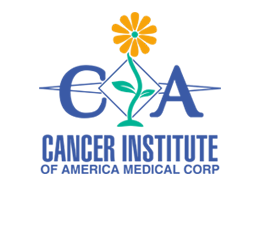 Open HoursClosed
Open HoursClosed
breast cancer battle
you have the best industry specialists to support you!
☎ 310-993-4679☎ 310-993-4679
Quality Breast Care Programs
For Benign and Malignant Conditions
We specialize in treating:
Utilizing extensive knowledge, skills, and experience in the field of breast care, we are confident in presenting you with excellent treatment options that are specifically designed for you and your case. Partner with us today, and together, let us fight breast cancer!
Comprehensive Women’s Care
Women deserve to feel good about themselves, even when facing the adversity of a disease. For that reason, we offer a variety of cosmetic treatments such as Botox, Fillers, and Skin Care in a safe way that does not interfere with other treatments. Our experts are also very experienced in all aesthetic procedures, including breast augmentation, breast reduction, body contouring, "tummy tuck," and facelift.
Our Breast Care Services
|  |
The current treatment of breast cancer involves a combination of surgery, chemotherapy, anti-hormonal therapy, and immunotherapy.
When treating the cancer with the intent of cure, surgery is the first line of treatment with adjuvant therapy added with the intent of preventing recurrence.
Surgical treatment of breast cancer focuses on eradicating the cancer from the breast, and sampling the lymph nodes from the axilla to stage the disease and predict its behavior.
There are two surgical options to treat cancer of the breast, both are well-documented and widely accepted with strong clinical evidence to suggest they are equivalent in the ability to eradicate disease.
The results of this study after 20 years of observation, proves that patients may elect for preservation of the breast but will require breast radiation to suppress any undetectable disease, or a mastectomy alone.
Breast-conserving surgery is a reasonable option when the tumor is small enough to be removed along with a safety margin of normal tissue around it. This will leave behind enough breast volume to preserve the normal breast shape.
Oncoplastic techniques have made it possible for more women to be treated with breast conservation surgery, maintaining the breast shape and minimizing visible defects such as a depression under the skin where the cancer was removed. In many instances a procedure on the healthy breast may also be performed to preserve symmetry. This surgery preserves most of the breast but makes it likely she will need Radiation Therapy as well.
Mastectomy involves the removal of the entire breast tissue, usually including the areola and nipple. In most instances, the skin of the breast does not need to be removed, with the rare exception a of tumor that is located too close to the skin or involves the skin.
The preservation of the skin allows for a much easier reconstruction process with results unattainable before this technique was developed. Women can now look at themselves in the mirror with more of a sense of normalcy, instead of dealing with heavy scarring as a result of older techniques.
Depending on the size and location of the tumor, some women may be candidates for Nipple Sparing Mastectomy. This advanced technique helps preserve the natural look of the breast after the mastectomy. Dr. Boneti, along with other renowned breast surgeons, pioneered this technique for the treatment of breast cancer.
 https://www.journalacs.org/article/S1072-7515(10)01302-5/pdf
https://www.journalacs.org/article/S1072-7515(10)01302-5/pdf
His work on over 500 nipple sparing mastectomies was the first in large study series in the United States. He presented his findings at one of the most reputable surgical societies in the country and published shortly thereafter in a leading surgery journal. The seminal work of Dr. Boneti and his colleagues lead to the widespread adoption of this technique to other centers in America and is quickly becoming the modern standard.
Based on historical and landmark studies, removal of lymph nodes in the axilla help surgeons understand and predict the behavior of the disease. The lymphatics drain the cellular fluid and metabolism products back into the bloodstream. The most relevant complication due to the removal of lymph nodes is the obstruction of this drainage system. This blockage results in an accumulation of fluid in the affected arm, a condition known as lymphedema.
 https://www.dunemedical.com/wp-content/uploads/2017/04/Fisher_NEJM_2002.pdf
https://www.dunemedical.com/wp-content/uploads/2017/04/Fisher_NEJM_2002.pdf
In order to reduce the incidence of this complication, Dr. Boneti has worked in conjunction with Dr. Klimberg in developing a technique known as Axillary Reverse Mapping (ARM).
ARM is based on the simple principle of separately identifying the lymphatcis affected by cancer from the main stream drainage from the arm. This technique has dramatically reduced the rate of lymphedema development by 80 to 90%.
 https://www.researchgate.net/publication/269175762_Axillary_Reverse_Mapping_Five_Year_Experience
https://www.researchgate.net/publication/269175762_Axillary_Reverse_Mapping_Five_Year_Experience
Eradication of a breast cancer entails the removal of the cancer and a margin of normal tissue to ensure the complete excision of the disease. Therefore, a resulting volume loss or even a deformity is expected.
The goal of breast reconstruction is restore not only the women’s body image, but her psychological and physical well-being in such a way that empowers the women to restore her confidence and ability to resume her life activities and long term plans.
Breast reconstruction involves any surgical procedure performed to restore the normal shape and appearance of the breast. A breast reconstruction procedure may be performed alone or in combination with a second operation on the opposite
breast for symmetry.
The commonly performed breast reconstruction procedures follow three principles: maintain volume and reshape the breast, volume reduction, or volume augmentation.
The reconstruction procedures most commonly performed are volume augmentation, specially after a mastectomy. Once the entire volume of the breast is respected, a new breast mound can be created with a prosthesis or the patients own tissues (ie autologous).
Reconstruction with a prosthetic utilizes a saline or a silicone breast implant. The implant can be placed at same time of the mastectomy if the skin of the breast is spared, or at a later date. If not enough skin is available at the end of the oncological resection, a tissue expander is used to stretch the skin to the point it can cover a permanent implant. The tissue expanders are similar to permanent implants, the main difference is the presence of an access port that allows to inject or remove fluid to adjust its size.
Currently, the tissue expanders available are not meant to used for more than the 6 months, and a second operation is required to exchange the tissue expander for a permanent implant.
Where the advantage of reconstructing the breast with an implant at the time of the mastectomy is self explanatory, the advantage of a tissue expander is patient control of the final reconstructed breast and symmetry. A reconstructed breast can be created with a larger or smaller volume than the natural breast.
Another method of reconstructing is by using the patients own tissues. For that method to be employed, the patient must have an excess of skin and or fatty tissue to be harvested from another part of the body and transferred to the chest. The most common donor site is the lower abdomen. Patients with an excess of lower abdomen skin and fat can have it transferred to the chest to create breasts much alike a “tummy tuck “. It is very important to understand that the harvest procedure is an entirely different technique since the goal of the operation is for the tissue removed from the abdomen to be revascularized in the chest and NOT the aesthetic improvement of the abdomen. For those reasons, It is a much more invasive operation with a less inconspicuous scar and potential removal of muscle and nerves that may have a permanent effect on function, appearance and sensation.
Alternative donor sites include the hips, the buttocks, the thighs and the back.
A different approach to autologous reconstruction entails the removal of fat grafting through liposuction and the immediate injection of the fat in another location where volume is needed. This technique is utilized not only for breast reconstruction purposes but also in other types of reconstruction and even in aesthetic procedures including facial rejuvenation. This procedure is commonly used for partial breast volume reconstruction. A full breast reconstruction solely based on fat grafting is possible, but requires multiple procedures, it is limited by the patients donor sites, and its retention during the healing process varies among patients. Once healed, it is permanent and varies in volume according to the patient weight changes.
Volume reduction techniques for breast reconstruction are in essence a breast reduction. The difference is that the tissue to be removed is either the minimum necessary for the complete cancer removal, or a larger volume in case of a patient with large breasts that desires a more significant volume reduction. The entire operation is adjusted to rebuild the breast shape with the resulting breast tissue in order to restore a natural appearance. It is costumar to perform a similar reduction on the opposite breast for symmetry.
In this case, since radiation to the affected breast will be done after the surgery, a minor asymmetry May result from radiation changes, in which case further symmetrization procedures may be required.
Lastly, breast reconstruction options to maintain or reshape the breast resemble breast lift procedures. Where a small volume of tissue for the cancer extirpation is required, the amount of breast tissue preserved is maximized and the remaining breast tissue rearranged to restore a normal breast shape. It is also customary to perform a contralateral symmetrization procedure to achieve equal volume, shape and nipple-areolar position. Radiation is expected after breast conservation, therefore minor asymmetries may occur. Additional symmetrization procedure will alleviate pressure minimized such minor deformities.
Cancer Institute of America
Contact Info.
 |  (310) 993-4679 (310) 993-4679 |
| (424) 324-3880 |
